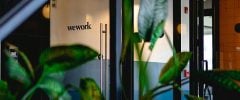The Future of Commercial Interiorscaping: Trends and Predictions

Over the past few years, the commercial interiorscaping industry has faced some significant challenges. The shift to remote work left countless office spaces vacant for extended periods. Combined with foliage shortages and rising material costs, this has put a strain on the industry. At the same time, many storefronts have closed or transitioned to online sales, and restaurants are barely surviving amidst growing inflation.
These economic pressures have changed the way companies manage their budgets, leading them to cut back on non-essential expenditures. I’ve witnessed these changes firsthand. Three of my large lobby atriums have undergone renovations—water fountains and beautiful live plant beds, once hallmarks of these spaces, were removed. In their place, we now see barren areas intended for public gatherings. Based on my experiences, let’s explore the future direction of commercial interiorscaping.
Adapting to Client Trends
One of the greatest strengths of the commercial interiorscaping business is its flexibility. Even though I’ve seen a decline in large atrium accounts and a standstill in acquiring new office clients, I’ve experienced a significant increase in revenue from holiday designs. During the first year of COVID-19, when most buildings limited access to essential employees only, my clients were unsure about decorating for the holiday season. However, by mid-November, every one of them decided to proceed with their usual festive setups, and some even requested additional decorations. Every year since, I’ve seen a consistent increase in the holiday budgets of the majority of my clients, as well as an expansion in their facilities. This increase in holiday-related sales was surprising—one I hadn’t predicted. Moving forward, I plan to double my budget for end-of-season sales and expand my storage space to accommodate this growth.
Meeting Industry Demands
In addition to creating joyful office spaces, I’ve seen a rise in demand for special event rentals. This may be driven by corporations looking to increase employee morale and offer a breather from workplace challenges. I haven’t done much in terms of special event rentals in years, so I have a limited stock of items like tall ficus trees, palms, and showy plants. Often, I’ve had to purchase these items as needed, which impacts my profit margins, but this will change as I build up inventory. Because of Florida’s climate, I’m able to keep most rental inventory outside in a protected area. However, during the winter months, relocating these items to an indoor location is necessary, which is less than ideal and requires extra labor. To address these issues, I plan to expand my greenhouse space and create new rental offerings, such as mobile green walls and topiaries.
Embracing Artificial Greenery and Residential Projects
While I don’t have a magic crystal ball to foresee the future of the commercial interiorscaping industry, it seems likely that budgets for office spaces will continue to be restricted. Expenses deemed non-essential, such as live foliage, are probably going to be among the first to go. However, I believe one key to being a sustainable business is adapting and changing with the times. With the increase in remote work, focusing on residential accounts may be a strategic move. Also, many clients prefer artificial plants over live ones to avoid maintenance costs, so offering artificial botanicals is an effective way to compensate for the decrease in live plant accounts. Make a plan to follow up with clients in six months to offer a cleaning and refurbishing service for these artificial plants.
Navigating the Future of Commercial Interiorscaping
Even though businesses have reduced their spending, there are always exceptions. A notable example is the motion picture industry, which thrived during the Great Depression as people sought an escape. This desire for a change of scenery is still true today—temporarily transforming spaces will probably be a profitable trend. In 2024, I plan to focus on these promising areas of my business and, hopefully, have a successful year.
You May Also Like
Leave a Reply
You must be logged in to post a comment.



















